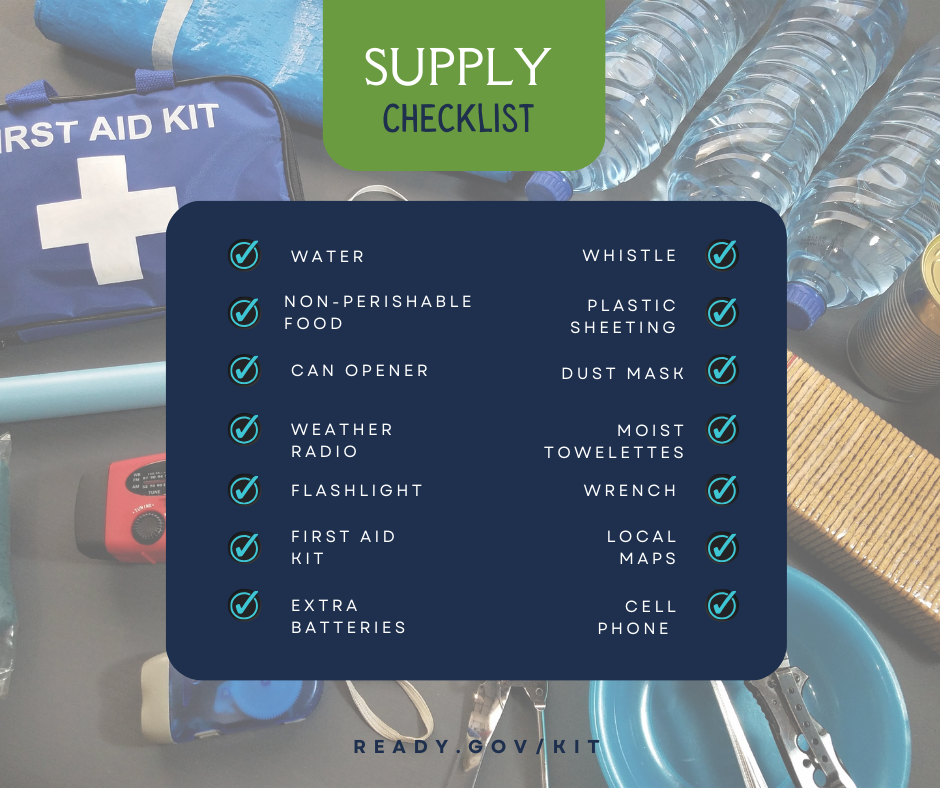Emergency Preparedness
Public health emergencies can come in many forms, such as floods, tornadoes, or even man-made threats like bioterrorism. These emergencies may occur with little to no warning. This is why the Scott County Health Department encourages every resident to do what they can to prepare for emergencies before they occur.
Emergency Plan
The first thing to do is to make an emergency plan for your household (ready.gov, 2023). Household members may not be at the same location when an emergency occurs. It is key to know how the group will communicate with each other, as well as where everyone will go to meet back up. This includes both a primary meeting spot, as well as a backup location. It is helpful to have an emergency contact for the household. This person should not live in the same neighborhood.
When planning, think about the daily needs of household members. Some things to consider include:
- Dietary needs
- Medical needs, like prescriptions and equipment
- Access and functional needs
- Languages spoken
- Pets or service animals
After a plan is created, practice it to be sure it will work and make changes as needed. Visit ready.gov/plan External Link for more plan guidance, as well as a fillable PDF form External Link to help document and share the plan.
Emergency Supply Kit
Next, make an emergency supply kit. There may not be time to search for supplies during or after an emergency. Stores may not be open to buy what is needed. The kit should contain enough food, water, and other supplies to support the basic needs of everyone in a household for several days.
According to ready.gov/kit External Link (2023), basic kit items could include: water (one gallon per person per day); non-perishable food; manual can opener; weather radio; flashlight; first aid kit; extra batteries; whistle (to signal for help); dust mask; plastic sheeting and duct tape (to shelter in place); moist towelettes, garbage bags, and plastic ties (for cleaning); wrench or pliers (to turn off utilities); local maps; and a cell phone with chargers and a backup battery.
The kit may require additional items based on household members' needs (i.e., prescription medications, pet supplies, baby items, feminine hygiene products, etc.). Check out the ready.gov/kit External Linkwebsite for more kit item information.

Some tips for storing and maintaining kit items include:
- Store items in airtight plastic bags
- Keep bagged items in easy-to-carry containers, like plastic bins or duffel bags
- Store canned food in a cool, dry place
- Keep boxed food in tightly closed plastic or metal containers
- Check kit items routinely to be sure that they have not expired
- Update items if any needs have changed (i.e., children have gotten older, someone started a prescription medication, etc.).
Finally, emergencies can happen anywhere. Consider having kits available in all your frequent locations, like home, work, and the car.
Are You Ready?
The Federal Emergency Management Agency (FEMA) has published a guide to help everyday citizens prepare for disasters called, “Are You Ready?” It is free and available online at https://www.ready.gov/sites/default/files/2021-03/are-you-ready-guide.pdf External Link.


